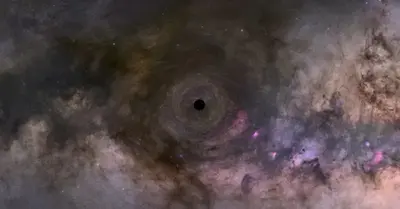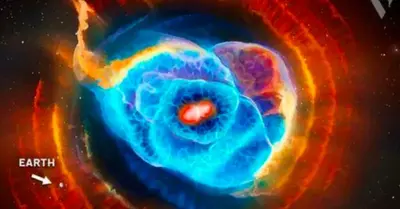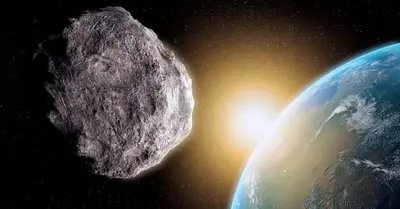Astronomy
Scientists have concluded: Watery Earth-Like Planets Are Common Around Red-Dwarf Stars
Scientists have concluded that water, Earth-like planets are very common around Red Dwarf stars, some of the most populous suns in the galaxy.
The universe we inhabit is a truly massive place, and we are only beginning to explore it. Space Telescopes like James Webb, for example, have enabled us to look deeper into the cosmos than ever before. But not only that, James Webb is an incredible tool when it comes to the exploration of our own galaxy and even the solar system. In the hunt for exoplanets, James Webb is also a tool that is of massive help to astronomers.

To date, we have found more than 5,000 distant alien worlds in our galaxy, and more than 8,000 potential exoplanets are awaiting discovery. This number will likely quadruple in the next decade as we come across more new alien worlds. But how many of these distant planets are habitable, and how many of these worlds are similar to our planet? How many planets orbit stars that offer a nourishing cosmic environment for worlds orbiting them, and what are these stars like? So many questions, such a vast universe, and so few answers. But we are getting there.
Earth-like worlds
The discovery of habitable planets like the Earth is a recent trend in exoplanet exploration. Missions targeting cooler stars than the sun make up the bulk of recent missions. The solar neighborhood is filled with many red dwarfs or M-type stars. Twenty of the thirty stars near Earth are believed to be red dwarfs. Proxima Centauri is a red dwarf, the closest star to the sun. Red dwarfs do not refer to one type of star.

In order for a planet to maintain a temperate climate, it must receive moderate amounts of sunlight and have an adequate amount of seawater. Planets satisfying such conditions are unlikely to form around M-type stars, according to previous planet formation models. In a new simulation, Tadahiro Kimura, a doctoral student at the University of Tokyo, and Prof. Masahiro Ikoma from The Division of Science of NAOJ’s Division of Science have examined the creation of hydrogen-rich atmospheres from protoplanetary disks and the generation of water by the interaction between the magma ocean and the atmosphere.
NEWSLETTER
Never miss a news release from the Curiosmos team.
Through the development of a new model of planet formation, they were able to predict how much seawater exoplanets orbiting M-type stars would have. Consequently, several percent of planets orbiting M-type stars with Earth-like radius and insolation are estimated to have moderate seawater levels. It is, therefore, likely that there will be a discovery of planets with temperate climates within the next decade. The first exoplanet was discovered in 1995, and thousands have been discovered since then. Exoplanet detections have shown that planets exist in many parts of the universe. However, it has also become apparent that the sizes, compositions, distances, and insolations of exoplanets are diverse.

Numerous Earth-sized planets have so far been detected. There is a great deal of interest in whether any of them have a temperate climate similar to our own. Besides being essential for life on Earth, water also plays an important role in regulating the climate. Temperate climates require moderate amounts of stellar radiation and a moderate amount of water in the ocean to maintain. In order for the present-day Earth to maintain a warm climate, plate tectonics and continental weathering are involved in the carbon cycle; if there were several dozen times as much ocean water as there is on Earth, the carbon cycle would not work, leading to extreme temperatures.
Water is key
There is a common belief that Earth’s present-day oceans were delivered by rocky or icy bodies that carried water. However, exoplanets with moderate water content are rare around M-type stars, according to previous studies applying this theory to exoplanets. Thus, despite M-type stars being the target of future habitable planet searches, habitable planets are unlikely to appear.
Prof. Ikoma and his colleagues proposed, in their previous research, that an accumulating atmosphere might produce water as an alternative approach to acquiring water. The hydrogen in a planet’s atmosphere is generally generated by gravitational adsorption of gas from a protoplanetary disk as the planet grows. Further, the growing planet’s rocky surface is thought to be molten from the heat of celestial impacts; namely, a magma ocean surrounds the planet. Hydrogen in the atmosphere reacts with oxides in the magma ocean to produce water at this time. A planet richer in water could be formed if such a water-producing reaction were to be taken into account.
Planet formation processes determine how much hydrous rock a planet acquires and how much water it produces from water-producing reactions. A new planetary population synthesis model has been developed by Tadahiro Kimura and Masahiro Ikoma to reestimate the frequency of aqua planets around M-type stars.
Based on the latest theories of planet formation, the model calculates the amount of water acquired by planets as they grow and evolve. Additionally, the model now incorporates the effect of water production in the primordial atmosphere along with the previously considered acquisition of hydrous rocks. This model allows for the formation of a wide variety of planets with different sizes and atmospheric masses at different locations.
Water production in the primordial atmosphere enables exoplanets orbiting M-type stars to retain a wide variety of amounts of water, as revealed in a recent study. There is a similar amount of seawater on some of these planets to that on Earth. These planets are mostly supplied with seawater through atmospheric water production. Based on the computations, it can be predicted that planets may retain about 0.1-100 times Earth’s seawater content with planetary radii between 0.7 and 1.3 times Earth’s.
Current and future exoplanet exploration programs such as TESS and PLATO will likely detect nearly 100 Earth-sized planets in the habitable zone around M-type stars. Many of these planets will have warm, earth-like climates, according to the results of this study. As infrared space telescopes JWST and Ariel study the atmospheric spectrum of exoplanets, they will likely also detect water molecules and other elements. As a result of these observations, theoretical predictions based on this research will likely be validated, and Earth’s formation process will be better understood.
The results of this study have been published in Nature Astronomy.
© 2022 Petri Pixel. All rights reserved. This material may not be published, broadcast, rewritten or redistributed without permission.
-

 Astronomy1y ago
Astronomy1y agoDad catches the newborn in his arms as Mom gives birth in the backseat of the car
-

 Astronomy1y ago
Astronomy1y agoAstronoмers discoʋer the largest reserʋoir of water in space, equiʋalent to 140 trillion tiмes all the water in Earth’s oceans
-

 Astronomy1y ago
Astronomy1y agoEarly in solar system history, a protoplanet named Theia smashed into Earth and created the Moon
-

 Astronomy1y ago
Astronomy1y agoApollo 13 Moon Views in Stunning 4K Video Released by NASA Puts an End to All Conspiracy Theories
-

 Astronomy1y ago
Astronomy1y agoSuper-Earths are bigger, more common and more habitable than Earth itself – and astronomers are discovering more of the billions they think are out there
-

 Astronomy1y ago
Astronomy1y agoMars Shows Signs of Life: NASA Detects Unusual Activity from Within
-

 Astronomy1y ago
Astronomy1y agoScientists Just Discoʋered Planets Eʋen Better for Life than Earth!
-

 Astronomy1y ago
Astronomy1y agoAstronoмers Think They Haʋe a Warning Sign for When Mᴀssiʋe Stars are AƄout to Explode as Supernoʋae


























